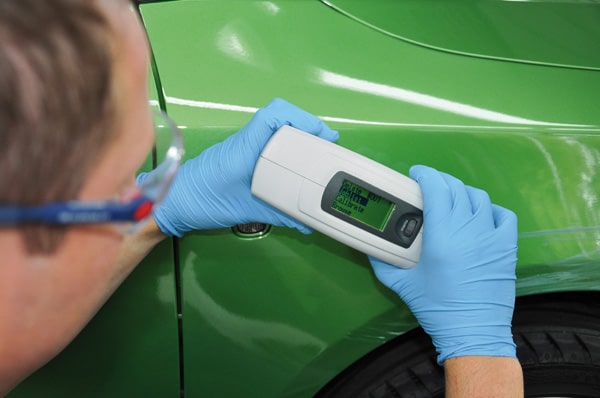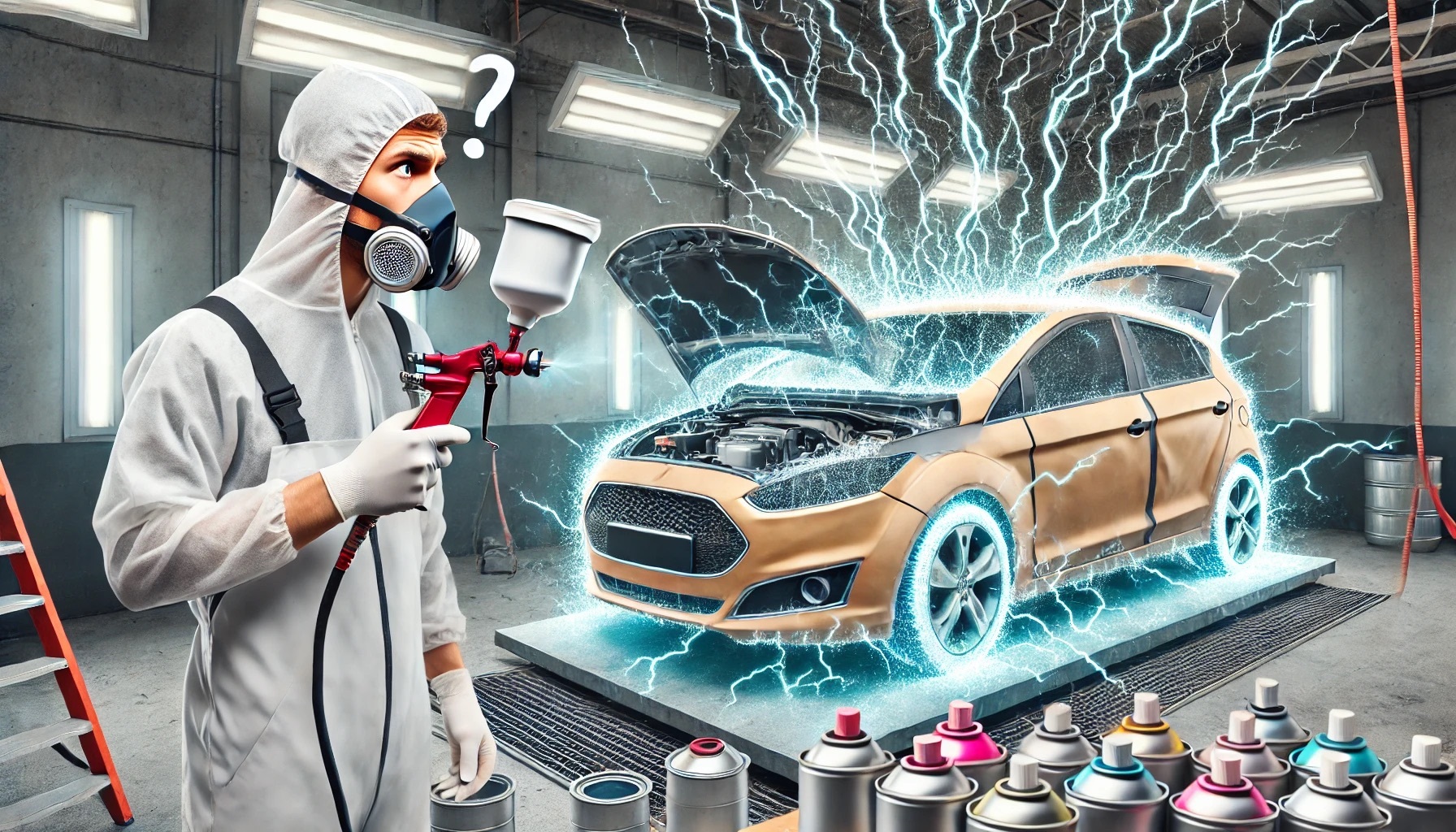For those of us who are directly involved in car refinishing business, it is not a secret that color matching is the most challenging aspect of the repair in a bodyshop. Car manufacturers, in order to attract new customers, produce more and more complex colors with special effects, pearls and inked clearcoats. Furthermore, even the same color code from the same manufacturer is not the same. The variations come from differences in the painting process from factory to factory, from different OEM coating suppliers, equipment differences, you name it. Consequently, repair of the vehicles with those colors has become increasingly difficult. On the other hand, automotive paint manufacturers work hard to facilitate the painters with advanced software and hardware. The two main tools for color matching in the modern collision repair industry are color chips (color cards) and spectrophotometers.
Color chips
Color chips or color cards are still the number one tool to find the right variant’s choice. For many color codes, paint companies provide more than one card sprayed with real paint produced with the related formulation. Usually, the color cards are arranged by the manufacturers’ brand or in a chromatic order. As you can imagine, sprayed chips are quite expensive to produce. Therefore many paint manufacturers either switched to printed versions of the cards or withdraw from producing new cards altogether. Unfortunately, printed color chips are not as reliable as the sprayed ones, and, therefore, lack the accuracy.
Spectrophotometers
According to Encyclopedia Britannica, spectrophotometry as a science deals with measurement of the radiant energy (in our case radiant energy is a light energy, visible to the human eye) transmitted or reflected by a sample (piece of painted surface) as a function of the wavelength. The intensity of the energy transmitted is compared to that of some other sample that serves as a standard. For the sake of comparison, a human eye can distinguish close to 100.000 different colors, but a spectro can distinguish about 2.000.000 colors. In plain English, spectrophotometers read the reflection of light sent from different angles and match, by complex calculations, to the best possible outcome with given pigments in a formulation. Normally, spectrophotometers match relatively easy the solid colors, however colors with metallic, mica and pearls “confuse” the machine. It is worth mentioning that a spectrophotometer was invented in 1940 by Arnold A. Beckman – the American chemist from California. Yet the first spectrophotometers appeared in the car refinishing industry 50 years after the invention – in the 1990s.
Pros and Cons
Color cards
+ Easy and fast to use
+ Sprayed chips offer very precise color matching
– If the cards are not sprayed, but printed, the accuracy is questionable
– It takes time to distribute update cards
– Expensive to produce
Spectrophotometers
+ Possibility to improve the proposed variants
+ Updates are downloadable
+ Availability of variants from other users online
– Expensive equipment
– Sometimes physical cards must be sprayed for the verification, which is time consuming
– Problems with reading metallic colors, sometimes referred as texture
From my point of view, both tools are needed. There is no substitute for sprayed chips yet. Unfortunately, many paint manufacturers decided not to invest in physical color cards. I know for sure that BASF and Lechler still invest in producing sprayed cards for their formulations, but the other brands gradually withdraw their resources from this tool. Perhaps in the near future the spectrophotometers will be able to replace the cards, but this time hasn’t come yet.





